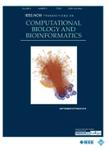版权所有:内蒙古大学图书馆 技术提供:维普资讯• 智图
内蒙古自治区呼和浩特市赛罕区大学西街235号 邮编: 010021

作者机构:Missouri State Univ Dept Comp Sci Springfield MO 65897 USA Missouri Univ Sci & Technol Dept Math & Stat Rolla MO 65409 USA Missouri Univ Sci & Technol Dept Elect & Comp Engn Appl Computat Intelligence Lab Rolla MO 65409 USA Missouri State Univ Engn Program Springfield MO 65897 USA
出 版 物:《IEEE-ACM TRANSACTIONS ON COMPUTATIONAL BIOLOGY AND BIOINFORMATICS》 (IEEE/ACM Trans. Comput. BioL. Bioinf.)
年 卷 期:2022年第19卷第3期
页 面:1365-1378页
核心收录:
学科分类:0710[理学-生物学] 0808[工学-电气工程] 08[工学] 0714[理学-统计学(可授理学、经济学学位)] 0701[理学-数学] 0812[工学-计算机科学与技术(可授工学、理学学位)]
基 金:Leonard Wood Institute U.S. Army Research Laboratory W911NF-14-2-0034
主 题:Trajectory Sports Blood Injuries Proteins Precision medicine Biological system modeling Unsupervised learning statistical analysis concussions predictive modeling GFAP NF-L tau UCH-L1
摘 要:Concussions, also known as mild traumatic brain injury (mTBI), are a growing health challenge. Approximately four million concussions are diagnosed annually in the United States. Concussion is a heterogeneous disorder in causation, symptoms, and outcome making precision medicine approaches to this disorder important. Persistent disabling symptoms sometimes delay recovery in a difficult to predict subset of mTBI patients. Despite abundant data, clinicians need better tools to assess and predict recovery. Data-driven decision support holds promise for accurate clinical prediction tools for mTBI due to its ability to identify hidden correlations in complex datasets. We apply a Locality-Sensitive Hashing model enhanced by varied statistical methods to cluster blood biomarker level trajectories acquired over multiple time points. Additional features derived from demographics, injury context, neurocognitive assessment, and postural stability assessment are extracted using an autoencoder to augment the model. The data, obtained from FITBIR, consisted of 301 concussed subjects (athletes and cadets). Clustering identified 11 different biomarker trajectories. Two of the trajectories (rising GFAP and rising NF-L) were associated with a greater risk of loss of consciousness or post-traumatic amnesia at onset. The ability to cluster blood biomarker trajectories enhances the possibilities for precision medicine approaches to mTBI.